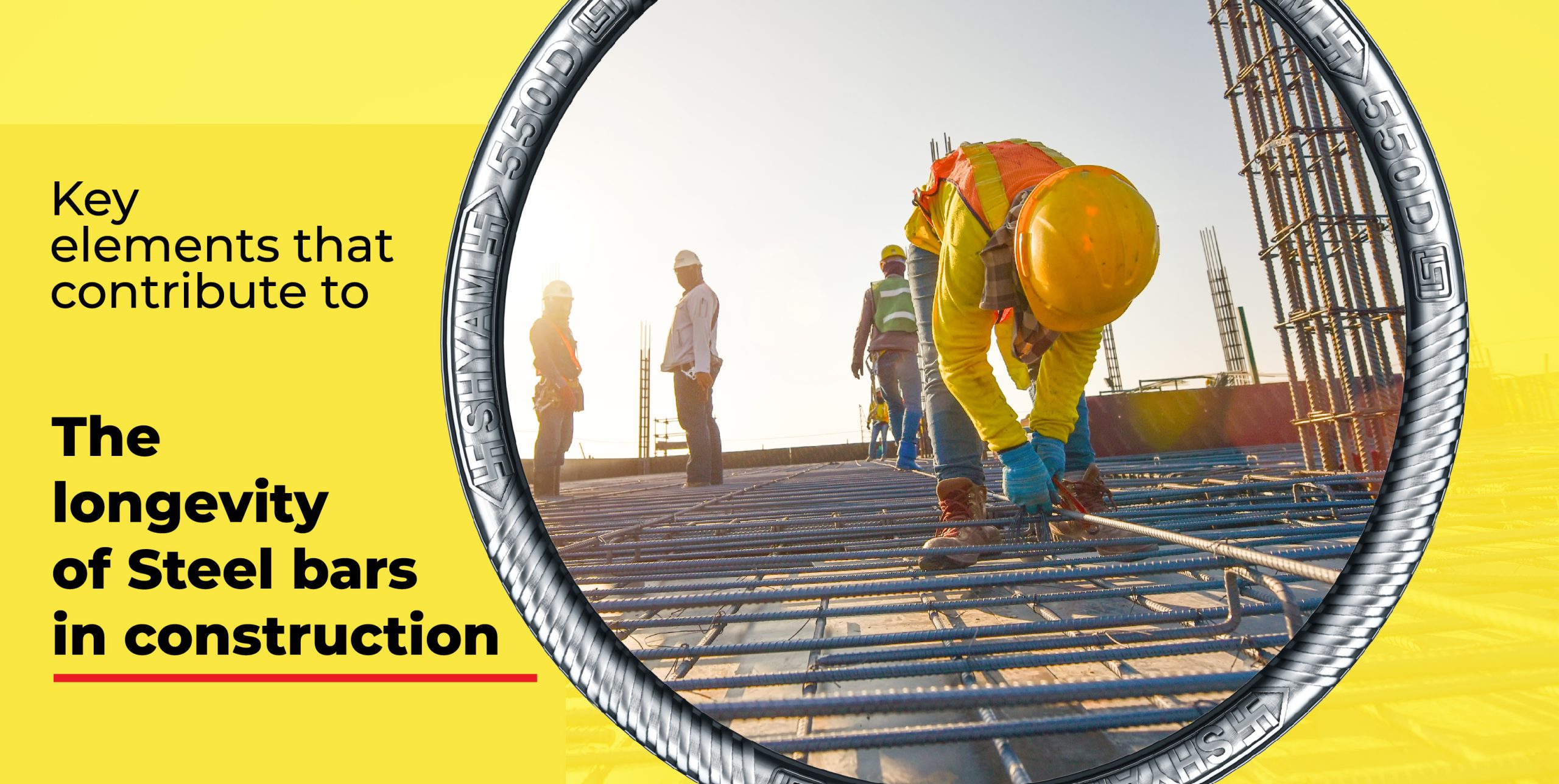Key elements that contribute to the longevity of the steel bars in construction
Rebars, also referred to as steel bars, are essential parts of concrete construction. For buildings, bridges, and other infrastructure projects to be structurally solid and long-lasting, the lifespan of the steel bars is also essential. These bars’ quality may deteriorate with time because of bad maintenance , weather exposure, and subpar construction techniques.
It can significantly compromise the overall structure of the steel bars. However, the integrity, lifespan, and durability of steel bars depend on an understanding of the critical components that contribute to their structural integrity. This article will examine the elements that are essential to extending the lifespan of steel bars used in building projects.
Measures to protect corrosion
The durability of the steel bars in reinforced concrete is seriously threatened by corrosion. Rust develops on steel when it meets oxygen, water, or chloride ions. The surrounding concrete fissures because of the steel bars’ deterioration due to corrosion. Additionally, it jeopardieses their structural soundness.
Different measures can be taken to tackle this issue.
- Fusion-bonded coatings, another name for epoxy-coating steel bars, shield the steel from corrosive environments. This makes the steel bars more susceptible to corrosion and greatly extends their lifespan in the environment.
- Galvanising the steel bars is another option to protect them. The layer of zinc acts as a significant barrier for the steel. Zinc corrodes more slowly than steel. This extends the life of the rivers and reduces rust formation, which in turn reduces corrosion.
- Applying a little electric current to steel bars that serve as a sacrificial barrier is known as cathodic protection. It prevents corrosion-causing electrochemical processes. Large structures including bridges, tunnels, and submarine infrastructure are protected by cathodic corrosion.
Material Quality of the Steel Bars
One of the factors affecting a steel bar’s lifespan is its quality. Premium steel provides the best strength, flexibility, and corrosion resistance due to its well-balanced combination of carbon, manganese, silicon, and other alloys. However, when exposed to moisture, stress, and other chemicals, low-quality steel may deteriorate too quickly because it is full of impurities or any imbalance.
Steel bars must meet specific industry standards and specifications, such as those established by ASTM International or the BIS. These certifications attest to the steel’s passing the necessary tensile, yield, elongation, and chemical composition testing. Engineers and contractors should verify the steel bars’ quality certifications before to using them for any construction project.
Adequate Concrete Cover
Concrete covers refer to the distance between the outer surface of the concrete to the embedded steel bars. Sufficient concrete cover is essential for protecting the rebars from corrosion. The industries specify the minimum amount of concrete cover necessary for the structures and environmental conditions.
The lack of adequate concrete covers is a common issue for construction that often results in poor workmanship, improper placement of rebar or concrete shrinkage. The contractors must always adhere to the strict protocols for the concrete covers to ensure that the rebars are properly aligned with the concrete.
Regular Maintenance and Inspection
For the steel bars to last as long as possible, routine inspection and maintenance are necessary. Cracks, spalling, or any other type of corrosion that exposes the steel bars to corrosive conditions could occur in the constructions. Frequent inspections can spot damage early and enable prompt repairs to avoid major structural problems.
Without causing any harm to the steel bars, methods such as visual inspections and testing using ultrasonic and electromagnetic waves can be used to evaluate their condition. The life of the concrete and steel bars can be increased by patching, grouting, or applying a protective coating when necessary, repairs are required.
Conclusion
The longevity of steel bars in construction is influenced by various practices. It includes the quality of the materials, concrete mix design, protective measures against corrosion and other construction practices. By addressing and understanding the key elements, contractors and engineers can ensure that the steel reinforcement and the structure remain durable and strong for a lifetime. This not just improves the lifespan of the steel bars but also contributes to the safety and sustainability of the built environment. Thus, a strong steel bar with tensile strength and durability is highly essential for the construction projects.

